Despite the fear of collision with small particles, Cassini successfully completed the first of its 22 dives in the narrow gap between Saturn and its rings, which will eventually burn up in Saturn's atmosphere.
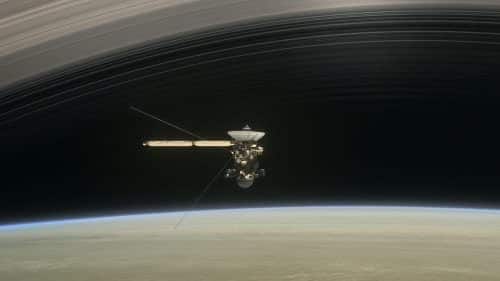
After 20 years in space, the veteran Cassini spacecraft has begun the final phase of its mission, its "grand finale" as NASA calls it. As part of it, the spacecraft visits an area that has never been explored - the narrow gap between Saturn and its rings.
The spacecraft completed its first dive in the narrow gap on Wednesday (April 26). She arrived during the daring dive to a distance of 2,950 km from the top of Saturn's clouds and 4,760 km from the D ring, the innermost of Saturn's rings.
The mission operators estimated that most of the particles that may be in space in this area would not be larger than smoke particles, but due to its enormous speed during the dive, 124,000 km/h, even small particles could have caused damage to the spacecraft's sensitive scientific equipment. To be safe, the mission operators pointed its main antenna dish (which was 4 meters in diameter) in the direction of its movement, to use it as a shield against the dangerous particles. This method caused the spacecraft to lose contact with the Earth during the dive, and only almost a day after the dive the spacecraft made contact with the Earth for the first time and informed its operators of the success of the operation.
"No other spacecraft has come this close to Saturn. We could only rely on predictions, based on our experience with Saturn's other rings, on what we thought the space between Saturn and the rings would be," said Cassini Project Manager Earl Mays of NASA's Jet Propulsion Laboratory (JPL). "I am happy to report that Cassini went through the gap exactly as we expected and came out the other side in excellent condition."
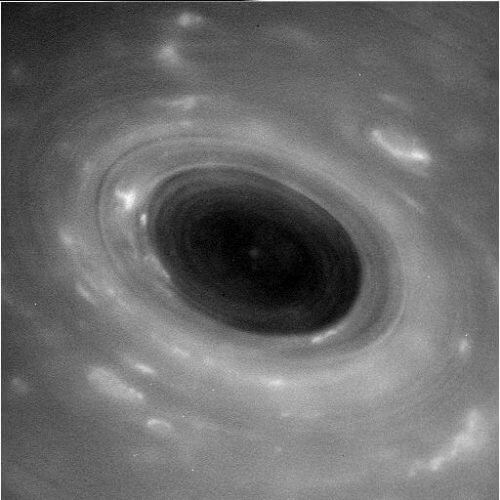
NASA researchers are currently processing the data collected by the spacecraft from the dive, and in the meantime have published several images that the spacecraft took from the north pole of Saturn, where it is Its unique hexagon – A hexagon-shaped storm that is as big as the entire earth. Although this region has been recorded several times before by Cassini, this time it reached its closest distance from the North Pole.
"These photos are stunning. We did not expect to receive such beautiful photos as we did. The different buildings we see in them are out of the ordinary. We thought we would see fog and rather boring things." said Kevin Baynes, Cassini Atmospheric Researcher. In the picture taken by Cassini you can see A hurricane-like storm located in the center of the giant hexagon, whose diameter of the eye of the storm is about 2,000 km. Another shot of the spacecraft during the dive records smaller structures, which may be thunderstorms. According to Baynes, the new photographs reveal these structures in detail for the first time, and will allow us to learn more about their dynamics.
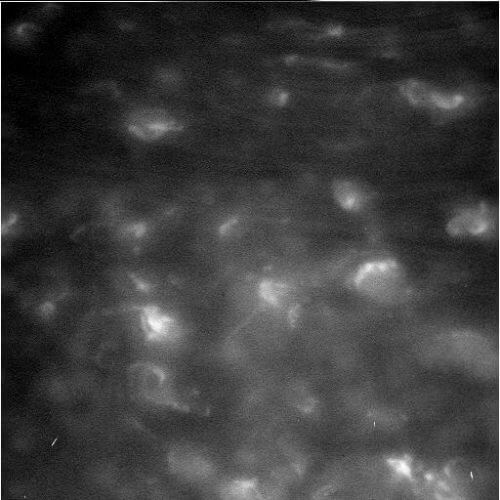
Although Cassini, even after 20 years in space, is in excellent condition and able to operate for many more years (thanks toThermoelectric radioisotope generator, which converts heat emitted by radioactive material into electricity), NASA decided to destroy the spacecraft, because the fuel in its main engine was running out. The space agency wants to prevent the possibility, however slight, that the spacecraft's trajectory will in the future bring it into collision with one of Saturn's two intriguing moons, Enceladus and Titan, where the existence of life may be possible. Since the spacecraft was not thoroughly cleaned of terrestrial bacteria that could survive inside it, such a collision could harm future research of those moons.
The daring route by which NASA chose to destroy the spacecraft will allow it to collect important scientific data about Saturn and the rings. The spacecraft entered the deadly orbit after passing for the last and 127th time near the moon Titan, whose gravity slightly distorted its orbit around Saturn and caused its closest point around the planet to shift into the narrow gap between Saturn and its rings. Titan will continue to influence the orbit of the spacecraft in the future, and will mean that on its 22nd dive, on September 15 of this year, it will enter Saturn's atmosphere, burn up as a meteor, and become part of the planet it has studied for 13 years.
NASA intends to use the spacecraft to its fullest. Even in its suicide dive into Saturn in September, the spacecraft will continue to operate its scientific instruments until it disintegrates and burns up in the atmosphere. It will transmit the data it collects live to Earth, unlike the previous dives where it would save the information on its computer and transmit it later.
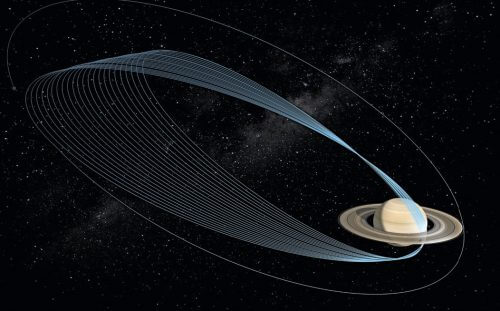
Among other things, NASA researchers hope that the spacecraft's unique trajectory within the narrow gap will allow it to map Saturn's gravitational field with great precision, thereby better understanding its internal composition. The gravitational field will be mapped by examining small changes in the spacecraft's orbit near Saturn, similar to how the Juno spacecraft is currently doing this around the planet Jupiter, which it entered orbit last year.
The researchers hope that the spacecraft will also provide a lot of information about Saturn's rings - and the most important figure they expect is the exact mass of the rings. "As for the age of the rings, it depends on their mass. If they are more massive than we now think, they may be old, as old as Saturn itself, and they could have survived the bombardment of micrometeoroids, this erosion. If they are less massive, then they must be young. Perhaps a comet, or a moon, or an object from the Kuiper belt [located at the edge of the solar system, beyond Neptune - AK], came too close, was broken into pieces by Saturn's gravity and created the rings." the explanation Linda Spilker, principal investigator of the Cassini mission.
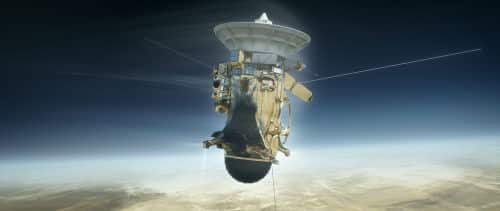
On some of its future dives, the spacecraft will get dangerously close to Saturn's atmosphere, and try to directly sample its composition, using its mass spectrometer. Even in its final dive into Saturn, the researchers hope that the instrument will continue to work and sample the molecules in the planet's atmosphere.
Cassini's next narrow-gap dive will take place on May 2.

6 תגובות
It's not me filtering, there is software that filters spam and there are things it mistakenly identifies as spam and blocks my review. It's better that way than getting hundreds of comments that point to dangerous websites.
Thank you, father, for not hissing. your right
The link to the presentation from 2016:
http://www.sfu.ca/physics/cosmology/CCGRRA-16/talks/contributed/Tippett.pdf
I accidentally sent a wrong link.
I am also interested in the human story around the article. The theory has been around since 2013. But maybe because TIPPET is a scientist in British Columbia (University) it took him maybe 4 years for the scientific community to get over the article in ARXIV, and see that it's not bullshit and now a respectable journal publishes it, plus the Canadian University of Alberta, which hosts conferences in relativistic astrophysics and general relativity, hosted The same and from there the presentation. Second author David Tsang from McGill University PhD in Computational Astrophysics.
There is an article about a new mathematical model within the framework of general relativity that explains how it is possible to travel back and forth in time, in the scope of large stars that are not black holes. For my father's consideration - it is worth reviewing it in the knowledge whenever it is.
The article explains that it is possible to create a bubble in which different times can be obtained compared to the rest of the universe.
The technology to implement such time travel does not exist yet. The two professors only show that in principle it is possible.
The original article costs 20 POUNDS and is out now - I am not publishing it.
traversable acausal retrograde domains in spacetime
is published in the newspaper
Published 31 March 2017 • © 2017 IOP Publishing Ltd
Classical and Quantum Gravity, Volume 34, Number 9
http://iopscience.iop.org/article/10.1088/1361-6382/aa6549
There is an 18-page presentation on the theory described in the article from 2016:
https://www.hayadan.org.il/cassini-successfully-completed-her-first-dive-between-saturn-and-his-rings
And there is a version of an article from 2013 - the guy TIPPET tried to publish the theory from 2013 and now succeeded in a respected newspaper:
https://arxiv.org/pdf/1310.7985.pdf
In the news: the spacecraft completed its first dive in the narrow gap on Wednesday (October 26).
Maybe you mean April 26?
If it is indeed 26/4, then it turns out that it is the orbit that circles Saturn once every 6 days.
Two TLH corrections in the last paragraph of the article,
Where it is mistakenly written "Zedek" Tchel "Shabtai"
"...In some of its future dives, the spacecraft will come quite dangerously close to Jupiter's atmosphere, and attempt to directly sample its composition, using its mass spectrometer. Even in its last dive into Jupiter, the researchers hope that the instrument will continue to work and sample the molecules in Saturn's atmosphere."